Echeveria ebony is a fabulous evergreen plant which is endemic to the United States. This is renowned as a famous agavoides cultivar with pointed edges.
When the plant is going through stress, they would usually turn up in beautifully colored foliage particularly during winter months.
Ebony is a succulent which you cannot afford easily since it is not a fast grower and since it is not spreading prolifically. They belong to the family Crassulaceae. Ebony wax agave is their common name.
So, if you are a lucky owner of Echeveria ebony plants, continue reading this article as it will be helpful for you to enhance your knowledge.
We are going to cover how you should care for these wonderful plants and the best ways of multiplying these plants. Before proceeding, we will have a look at their characteristics.
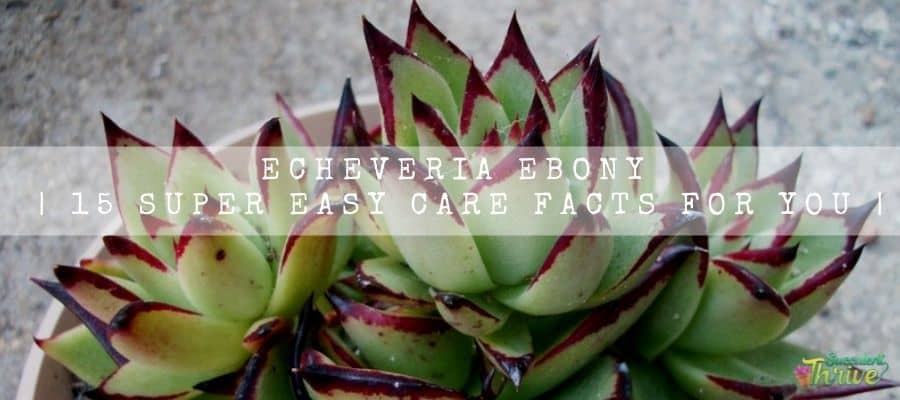
How do I identify Echeveria ebony?
One of the unique characteristics of these plants are their pointed glossy leaves which form in rosette.
You could expect how their color changes throughout the year and when the plant is going through stress.
Once these plants go into stress they tend to respond to that by turning the leaves tips dark red burgundy or almost black.
On the other hand, you could spot these plants in light green when they are going through the warmer months.
Some people might get confused to identify these plants from Echeveria Lipstick as Lipstick plants would also turn their leaves edges into red.
However, they will have narrow leaves edges. Ebony tends to take a gray green color. Each ebony rosette would be about 15-20 cm wide and 10 cm tall.
During spring, you could expect them to flower with pink to red blooms. Those flowers will further consist of red tips as well.
Size of the plant
Echeveria Ebony plants could be about 20-30 cm in width. Further they would be about 15 cm in height.
Growth rate
These are not easy to plant, and you could mainly spot them being grown as individual rosettes and they do not produce offsets.
If we take about 1000 plants into consideration, there will be about 10-15 % of plants which will produce pups.
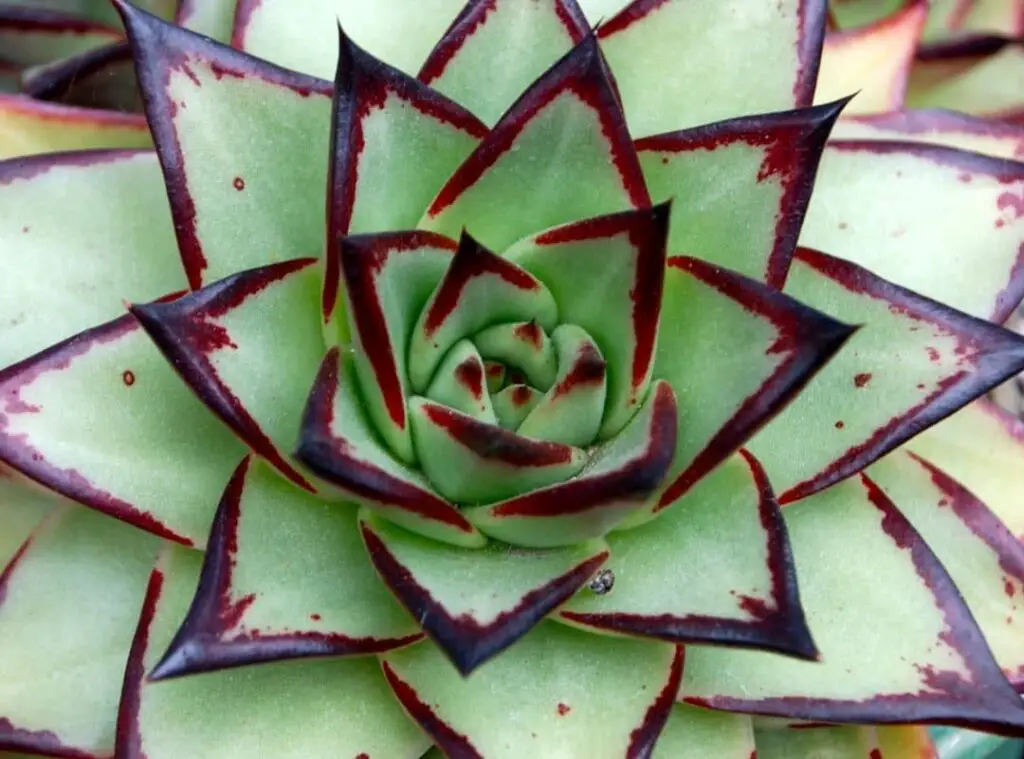
One look care guide
| Botanical Name | Echeveria ebony |
| Common Name | Ebony wax agave |
| Plant Type | Succulent |
| Mature Size | 20-30 cm in width / 15 cm in height. |
| Sun Exposure | Full sunlight to partial sunlight |
| Soil Type | Well-draining |
| Soil pH | 5.5-6.0. (Acidic to neutral). |
| Bloom Time | Late winter into spring |
| Flower Color | Pink to red |
| Hardiness Zones | USDA hardiness zones 9b-11b |
| Native Area | United States., Mexico, Central America and in northern South America |
| Toxicity | Nontoxic |
| Average price | USD 5 |
How do you take care of Echeveria ebony?
Light Requirement
Echeveria ebony plants are generally hardy sets of plants. As such they would thrive in numerous conditions.
However, it is recommended to grow them in bright spaces. If you wish to grow them indoors, you should place them near a bright sunny spot at your home.
If you still think your ebony plants are running short of adequate sunlight, you could consider growing them near a grow light.
Having that if you wish to grow them in patios or in gardens, you should grow them in a place where they can gain bright sunlight for a few hours.
Furthermore, you need to protect the plants from intense heat waves particularly during summer.
Temperature and humidity
Echeveria ebony are temperate plants. They would prefer to thrive in temperatures around 21 degrees Celsius (69-degree Fahrenheit) – 27 degrees Celsius (80 degrees Fahrenheit) during warmer months.
Avoid placing them for temperatures below 15 degrees Celsius (59 degrees Fahrenheit) for prolonged periods.
If there is any forecast of much cooler weather conditions, best is to shift them indoors if you have grown them outdoors.
However, consider that you have grown them in the gardens, then you will have to protect them with a tarp to avoid the dying of the plant.
Is it cold hardy?
Echeveria ebony is not cold hardy. As such do not expose them for temperatures below 0 degrees Celsius / 32 degrees Fahrenheit.
If there are any cold climates and frost for prolonged periods best is to over winter them in a greenhouse or in your home.
However, when you keep these plants indoors, you should make sure they get the brightest sunlight there.
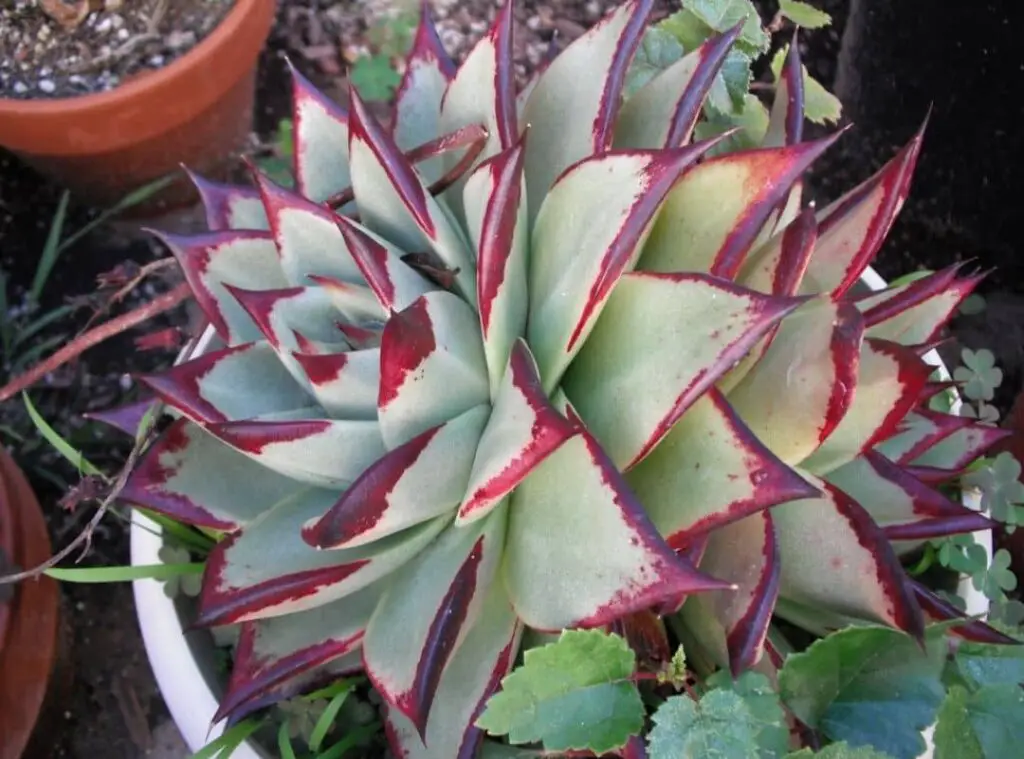
USDA hardiness Zone
Echeveria ebony plants prefer to grow in USDA hardiness zones 9b-11b ( -3.9 degrees Celsius).
Watering Requirement
Watering is the biggest weakness of these plants. As such it is important that you water them properly so that they can thrive well.
If you over water them, it could cause these plants to even die. You need to adjust the watering frequency depending on the season.
For example, if we consider a season like summer, it is important that you water them more when compared to winter.
During winter, you could water them less often, especially the ones which you have kept indoors.
However, you should always observe the soil condition whether it is dry or soggy before watering. Just like with the other succulents, you need to water the ebony plants only if the soil is dry.
Watering the echeveria ebony plants is very vital when taking care of them. Always ensure that you do not let those plants stranded in waterlogged situations.
Further, do not provide excess water for them too. You may apply the soak and dry method when watering them so that you could avoid over watering.
Soil Requirement Type / pH
In terms of the right soil mix it has to be ideally a well-draining loose soil mix which has a good aeration. It has to be a soil mix which has 50 % peat, 25 % of coarse sand and 25 % topsoil.
You may use river stone instead of coarse sand. In addition to that, you could use substances such as perlite, vermiculite, river stones as they would be effective in enhancing the draining of the soil mix.
The ideal ph. of the soil should be 5.5-6.0. (Acidic to neutral).
When you grow them outdoors, you could consider adding some potting mix in the garden soil if the soil available in the garden is too heavy. That will help the plants to stay stable in the garden soil.
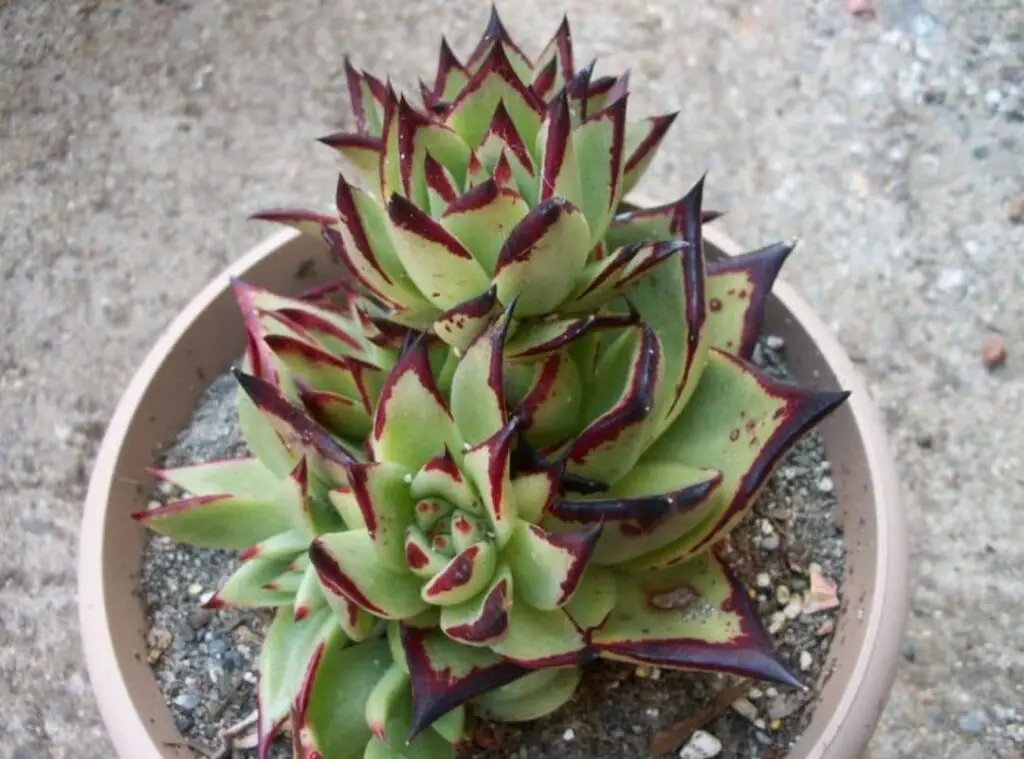
Flowering and Fragrance
Echeveria ebony plants produce blooms in pink to red. You could expect them to flower in late winter to spring.
Pot size Potting and Repotting
If you spot your plant’s roots have come out from the potholes, you could consider repotting them. Generally, you may report to them once every two years.
Further when you repot, you need to always transplant them in a slightly larger pot. Avoid using extra large pots since that would only create trouble for your beloved plants.
Further you need to report them during spring or in summer. Further you may use a slow-release fertilizer also so that the growth of the plant would be benefitted.
Moreover you should report them once you freshly purchased them from the stores.
Where to Plant
You need to plant the ebony plants in a place where they can gain bright sunlight. As such when you plant them in a garden, ensure that you expose them for proper sunlight.
Ideally it has to be full sunlight in the morning and partial sunlight in the afternoon. Hence outdoors weather conditions would suit them the best rather than indoor weather conditions.
In terms of temperature, you should grow them in a place where they do not get exposed for colder temperatures.
As such if you have grown them outdoors, you should shift them indoors when there is any forecast of frost conditions. They could survive indoors if they can gain adequate sunlight.
Fertilizer and time of year
Echeveria ebony are not dependent on fertilizers. Having said that, if you provide them with some nutrients, plant growth would be benefitted.
Consequently, it will help the plant to grow vigorously. Therefore, you may add some fertilizers during spring and summer.
Skip feeding them during winter. further do not ever use high chemical fertilizers as it could create fertilizer burns in the plants.
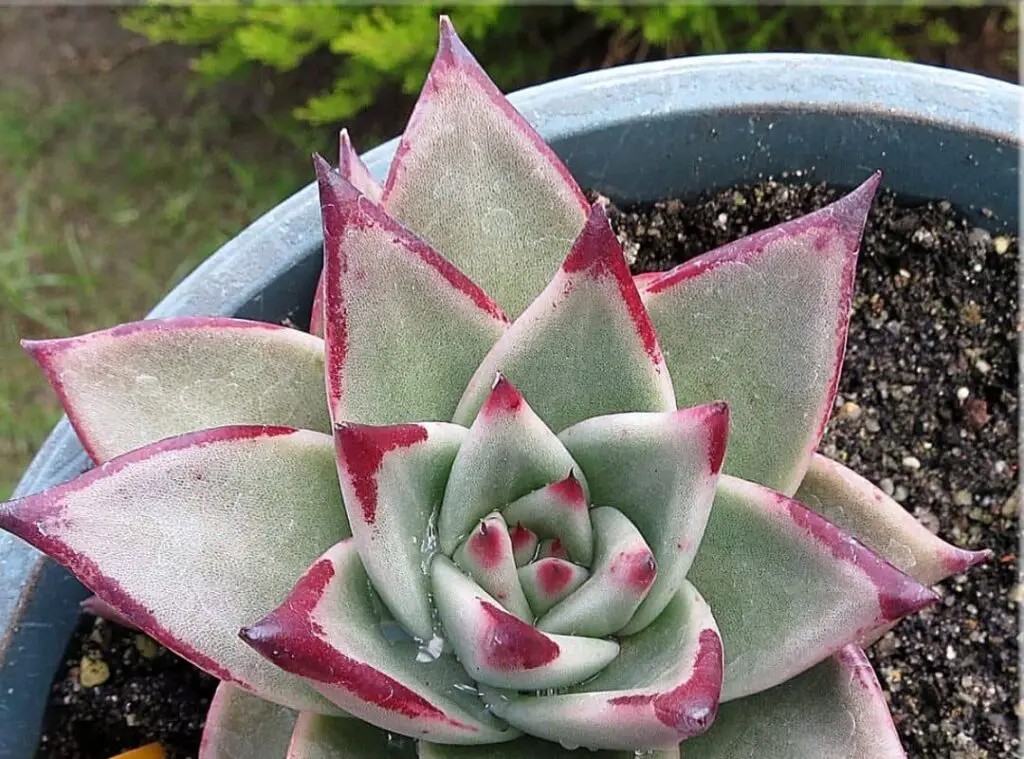
Dormancy
They would go dormant either in summer or in winter.
Other plants Pairs Well With
Echeveria ebony plants pair well with other Echeveria plants
Can be toxic to pets
Echeveria ebony plants are not toxic for pets, humans and for any other livestock. Having said that, you should not consume any part of the plant.
Common bugs and illnesses
These plants are prone to get affected by a few pests’ types such as mealybugs, aphids etc. Mealybugs could cause root rots.
Apart from that, aphids could attack the rosette center particularly in seasons like spring, autumn. If you could spot any ants around the plants, that is an indication that there are scales, mealybugs, and aphids etc.
Further if there are any leaf bumps, hardening and waxy discharge, those could also be signs of pest’s attacks of the ebony plants.
To overcome them, you could spray them with water. Alternatively, you could use a cotton swab dipped in alcohol and then apply it on the affected areas.
After that you may rinse them with water. If you are looking for an easy remedy you may go ahead with a specific insecticide.
Further you could consider repotting them in a new soil mix so that the spread of the fungus would be interrupted.
Apart from them, there are slugs, snails and grasshoppers, caterpillars who could depend on the fleshy leaves of these plants.
Special Care tips
It is not necessary for you to do anything special to take care of them. However, you could get rid of any wilted or dying leaves so that it would allow the plants to grow vigorously.
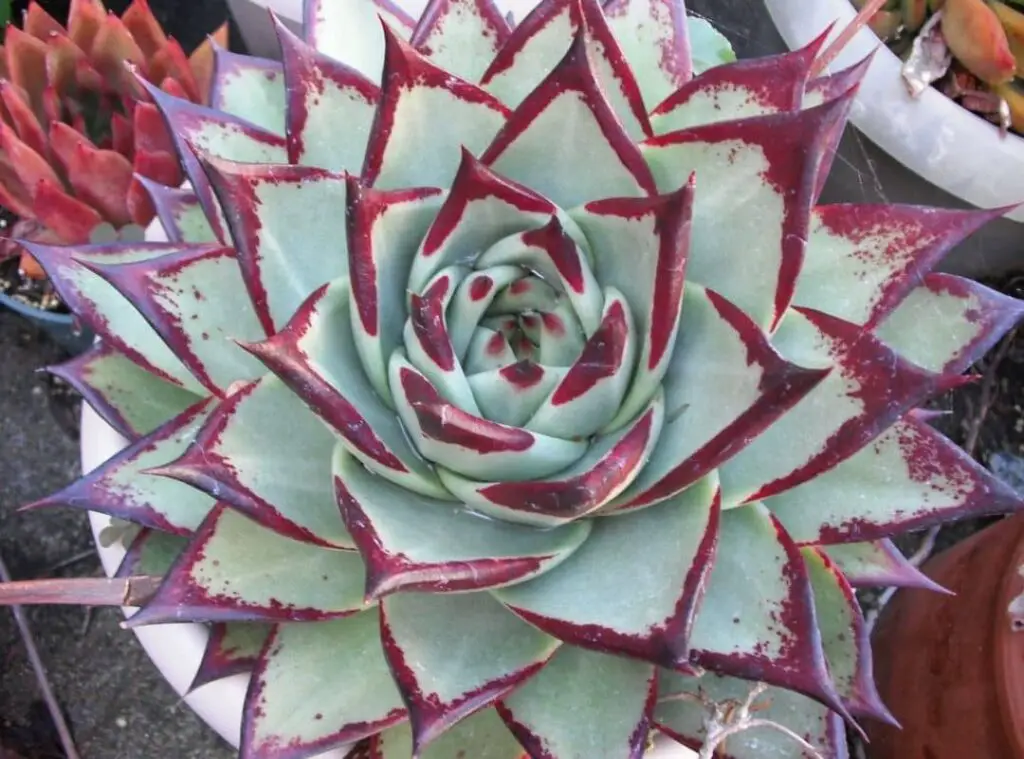
How to propagate Echeveria ebony
Propagation through leaves
First obtain a leaf which is healthy. When you remove the leaf, ensure you are taking the whole leaf and there are no leftovers in the plant.
Further avoid injuring the mother plant when you are doing this.
Once you remove the leaf, you need to let it become callous first and after that only you may replant them in a new well-draining soil mix. You may water them when the soil is dry.
Propagation through cuttings
To do this, you need to cut a leaf from a mother ebony plant whilst using a clean knife or scissors. Next, you need to let them become callous just like in the leaf propagation method.
After that you may place them in a fresh well-draining soil mix. You may water the specimen when it is dry.
Propagation through seeds
Echeveria ebony plants are slow growing plants. As such, using seeds for propagation is not the best to do.
However, if you still wish to do it, you could place them in a well-draining soil mix. You could try this outdoors.
Echeveria ebony plant benefits
They would fit in as perfect outdoor plants. In addition to that they would be handy as indoor plants as well given that you provide sufficient sunlight for them.
Read Next : Echeveria Akaihosi Care | 14 Secrets You Really Should Know |
Read Next : Echeveria Lola Succulent Ultimate Care Guide | 15 Care Facts |
Read Next : Echeveria Imbricata Succulent |15 Mind Numbing Care Facts |
